To tamp espresso, apply 30 pounds of pressure to evenly compress the coffee grounds in the portafilter. Proper tamping ensures optimal extraction and flavor in your espresso.
Tamping requires precision and consistency to achieve the best results, so mastering this skill is essential for any barista or home espresso enthusiast. Understanding the importance and technique of tamping will elevate your espresso-making experience and the quality of the final brew.
The Basics Of Espresso Tamping
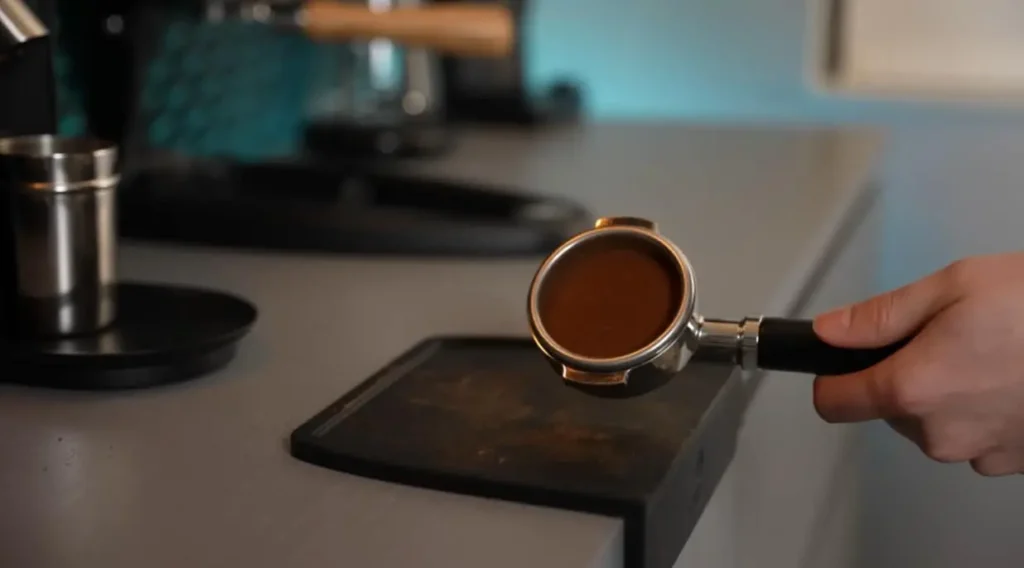
Espresso tamping is a crucial step in the coffee-making process that directly influences the taste and quality of your espresso shot. It involves applying pressure to the coffee grounds packed into the portafilter to create a firm and even puck.
What Is Espresso Tamping?
Espresso tamping refers to the act of compacting coffee grounds in the portafilter to create a solid puck. This puck forms the foundation for the water to flow through the coffee grounds during extraction. Tamping is done using a tamper, a handheld device with a flat bottom that fits perfectly into the portafilter.
Why Tamping Is Important

Tamping is essential because it ensures that the water flows evenly through the coffee grounds, allowing for optimal extraction. By compacting the grounds, tamping creates resistance that slows down the water flow, allowing more time for the water to extract the flavors from the coffee. Without proper tamping, the water can find paths of least resistance, resulting in an uneven extraction and a lackluster espresso shot.
Factors Affecting Tamping Pressure
Several factors influence the amount of pressure you should apply when tamping, each contributing to the overall taste and quality of your espresso shot.
| Factor | Description |
| Grind Size | The coarseness or fineness of the coffee grounds affects how densely they can be packed. Finer grinds require less pressure, while coarser grinds need more pressure. |
| Coffee Dose | The amount of coffee used in the portafilter affects the tamping pressure. A larger dose may require more pressure to create an evenly compacted puck. |
| Tamper Size | The size of the tamper should match the diameter of the portafilter to ensure even tamping. Using the wrong size can lead to uneven extraction. |
| Experience Level | The skill and experience of the barista can influence the amount of pressure applied during tamping. With practice, a barista can develop a consistent technique. |
Recommended Read: Coffee Dosing: This Trick Will Change Everything!
The Role Of Tamping In Espresso Extraction
Tamping is the act of compressing the coffee grounds into a uniform and dense puck inside the portafilter. This step not only affects the water flow but also greatly influences the flavor profile of the final espresso shot.
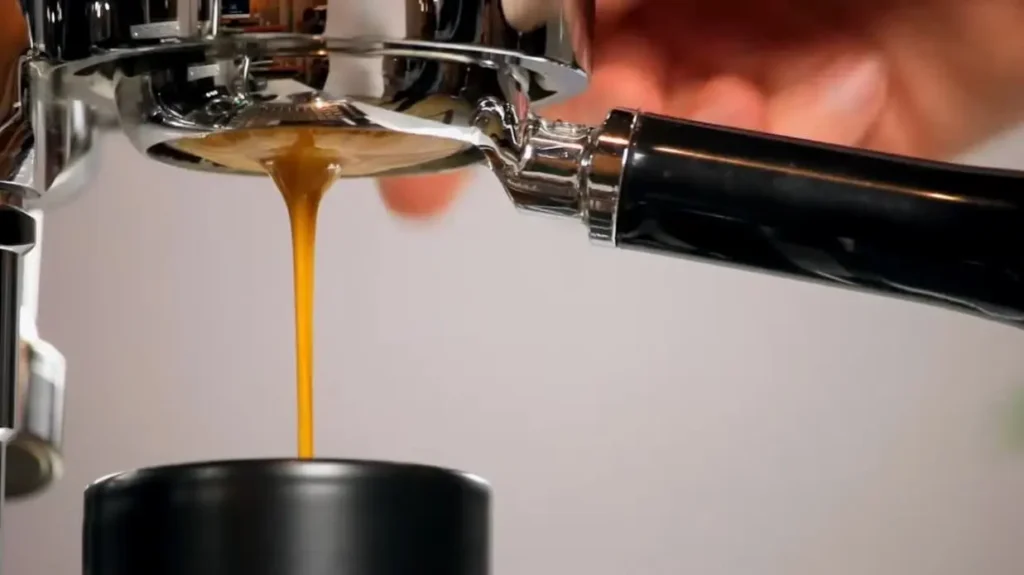
Uniformity Of Extraction
A key aspect of tamping is to ensure a uniform extraction of the coffee grounds. When the grounds are compressed evenly, the water flows through them consistently, extracting the flavors and aromas in a balanced manner. It prevents the water from finding the path of least resistance and causing uneven extraction, where some parts of the puck may be over-extracted while others remain under-extracted.
Impact On Flavor Profile
The way the coffee is tamped also has a significant impact on the flavor profile of the resulting espresso shot. Proper tamping can enhance the sweetness, acidity, and richness of the cup, while inadequate tamping may lead to a dull and lackluster taste.
When the coffee grounds are evenly and firmly compacted, the water can evenly extract the desirable flavors from the coffee. The increased resistance created by tamping promotes a slower and more controlled extraction, allowing the water to dissolve the soluble compounds in the coffee grounds more effectively. As a result, the flavors are fully extracted, producing a more flavorful and balanced cup of espresso.
On the other hand, if the coffee is under-tamped, the water will flow through the grounds too quickly, resulting in an under-extracted shot that lacks complexity and depth of flavor. Conversely, over-tamping can create excessive resistance, leading to an over-extracted shot that tastes bitter and burnt.
Equipment Needed For Tamping
The essential equipment needed for espresso tamping includes a tamper, a leveler, and a tamping mat. These tools ensure the grounds are evenly compressed for a delicious and consistent shot of espresso.
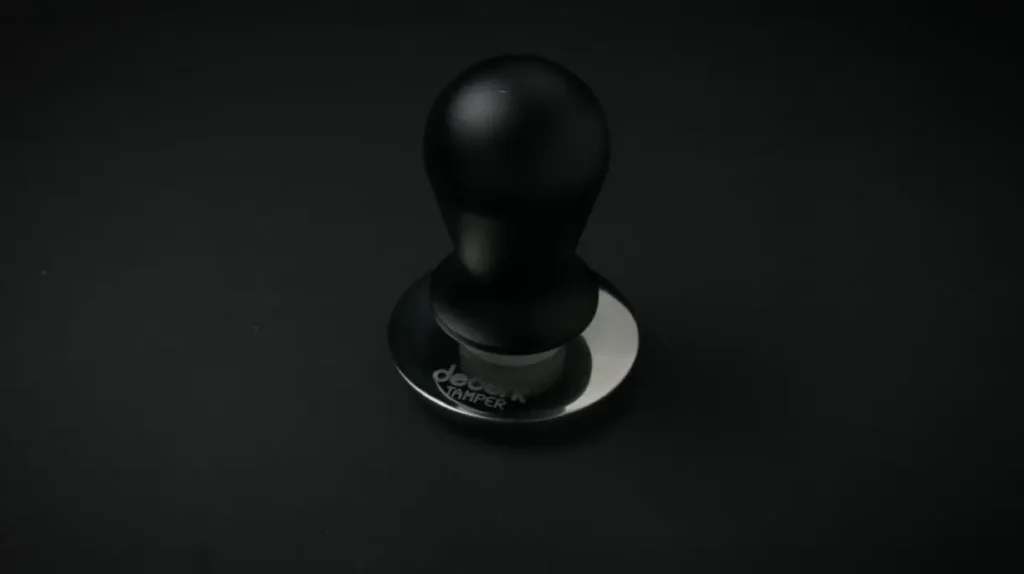
Tamper Tool
When it comes to tamping your espresso, having the right equipment is essential for achieving the perfect extraction. A tamper is a tool used to compress the coffee grounds evenly in the portafilter, creating a solid puck that water can flow through.
Sizing Considerations For Tampers
To ensure an effective tamp, it’s important to consider the size of your tamper to your portafilter. The tamper size should match the diameter of your portafilter basket to ensure even compression. Using the wrong size tamper can result in uneven extraction and channeling, leading to a subpar cup of espresso. It’s recommended to measure your portafilter diameter and select a tamper that matches it precisely.
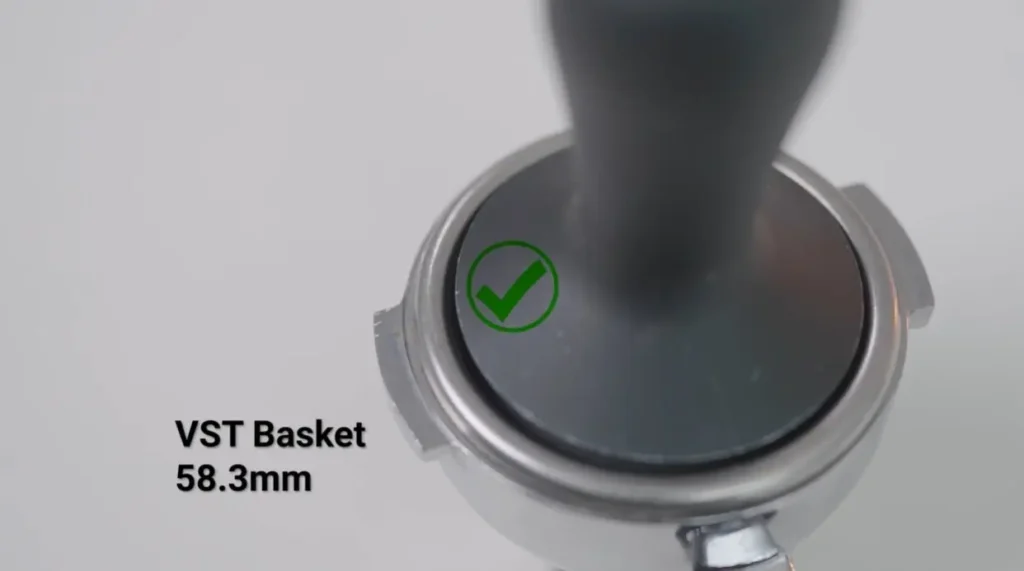
Moreover, the handle size of the tamper is another sizing consideration. A tamper handle that fits comfortably in your hand makes tamping more ergonomic and easier to control. Handles come in various shapes and materials, such as wood, metal, or even silicone, providing options for personal preference and comfort.
Additionally, some tampers feature adjustable depth settings, allowing you to customize the depth of your tamp. This feature can be beneficial if you prefer a specific pressure or have different baskets with varying depths. It is worth considering if you want more control over your tamping process.
Proper Tamping Technique
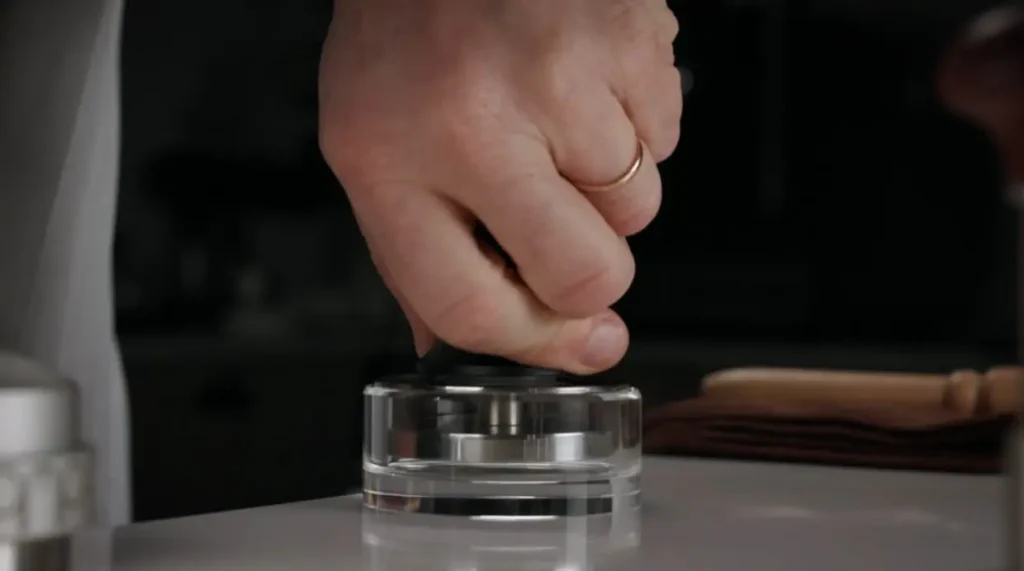
Preparing The Coffee Grounds
Before tamping, the coffee grounds must be prepared meticulously to ensure an even and consistent extraction. Start by evenly distributing the ground coffee in the portafilter using a gentle shake or a distribution tool. Then, level the grounds using a straight edge, ensuring there are no uneven mounds or gaps. This step is crucial in creating a level and compact bed for optimal extraction.
Tamping Pressure And Consistency
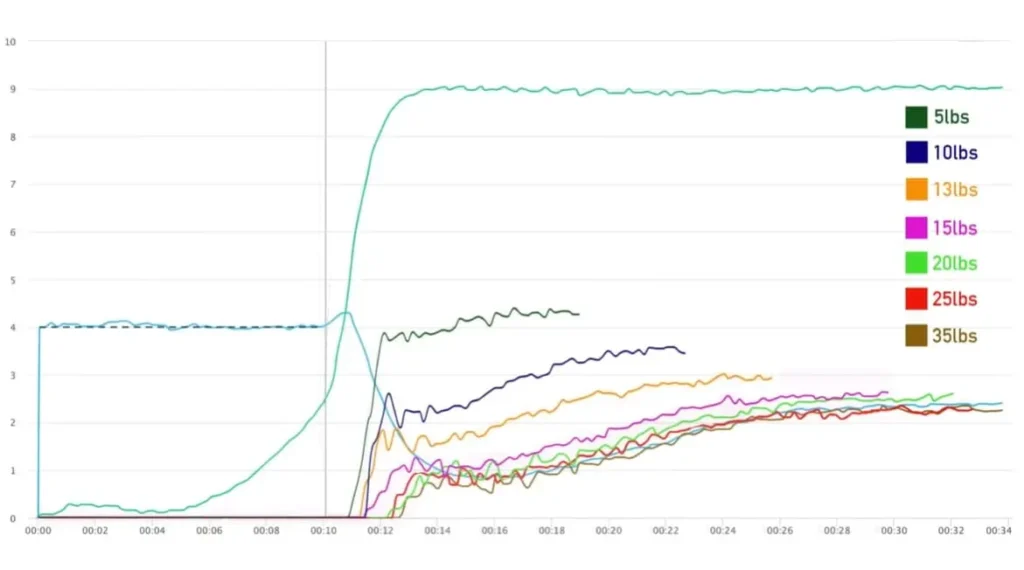
Applying the right tamping pressure is essential for creating a uniform and stable espresso puck. Ensure the tamper is held firmly and perpendicular to the portafilter, applying approximately 30 pounds of pressure.
Consistency in pressure across the entire surface is key to achieving a level and compact puck, which promotes an even extraction. Avoid exerting too much force, as it can lead to over-extraction, while too little pressure may result in under-extraction.
Angular Tamping And Its Effects
Angular tamping, or tilting the tamper while applying pressure, can lead to uneven extraction by creating channels in the puck. Always maintain a straight and level tamping to ensure uniform density and an even flow of water through the puck during extraction. This technique plays a significant role in preventing the formation of weak spots in the puck, ultimately contributing to a more balanced and flavorful espresso shot.
Common Tamping Mistakes

Tamping is often overlooked, leading to common mistakes that can affect the quality of the espresso. It’s important to be aware of these common tamping mistakes as they can greatly impact the taste and consistency of your espresso.
Uneven Tamping
Uneven tamping occurs when the coffee grounds are not uniformly compressed, resulting in an uneven extraction. This can lead to an imbalanced flavor profile in your espresso.

To avoid uneven tamping, ensure that the coffee grounds are spread evenly in the portafilter before tamping. Using a gentle but firm pressure, tamp the grounds evenly, creating a level surface for water to pass through during extraction.
Over-tamping
Over-tamping happens when excessive force is applied during the tamping process. This can lead to a slow and uneven extraction, resulting in a bitter and over-extracted espresso. To prevent over-tamping, it’s essential to apply consistent pressure without exerting excessive force.
Under-tamping
Under-tamping, on the other hand, occurs when insufficient pressure is applied during tamping. This can result in a quick and uneven extraction, leading to a weak and sour-tasting espresso.
To avoid under-tamping, make sure to apply enough pressure to the coffee grounds to create a uniform and compact puck. Finding the right balance between too much and too little pressure is key to avoiding this common mistake.
Tips For Perfecting Tamping Technique
Learn the secrets to perfecting your espresso tamping technique with these helpful tips.
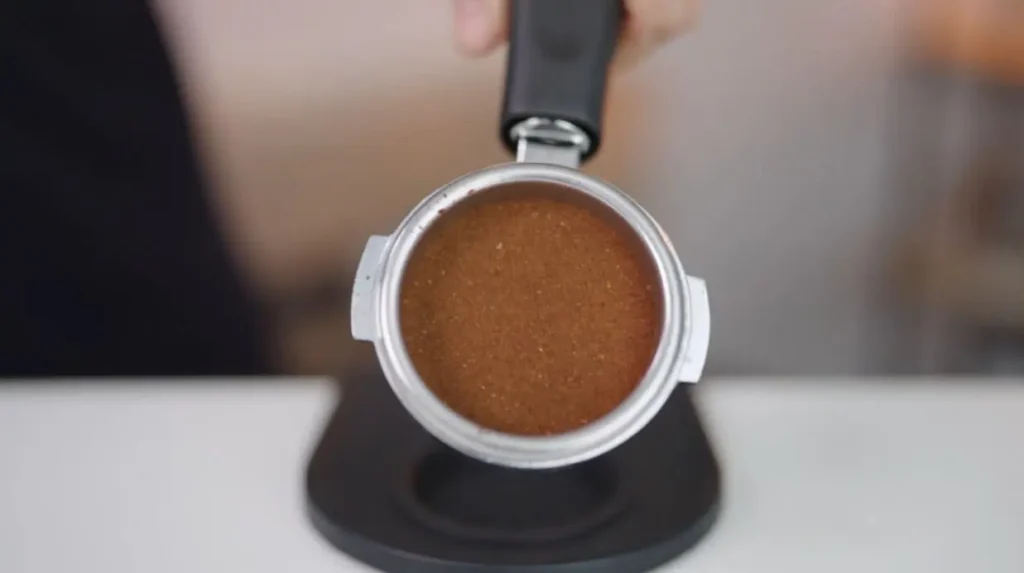
Practice And Experimentation
Mastering this skill requires practice and a willingness to fine-tune your approach. Here are some tips to help you perfect your tamping technique:
- Start by using the right amount of coffee grounds in your portafilter. Too little will result in weak, under-extracted shots, while too much can lead to over-extraction.
- Apply even pressure when tamping. Using a tamper with a flat, level surface helps ensure this. Hold the tamper with a relaxed grip and press down gently, allowing the weight of your arm to do most of the work.
- Experiment with different tamp pressures. While a firm tamp is generally recommended, some baristas find that a lighter tamp can produce better results with certain coffee beans or grinds.
- Pay attention to tamp consistency. Tamping at the same pressure each time helps ensure consistency in extraction. Consider using a coffee scale to measure the amount of force applied for optimal precision.
Using A Distribution Tool
Using a distribution tool, sometimes called a coffee distributor or leveler, can enhance your tamping technique even further. These tools aid in distributing the coffee grounds evenly across the portafilter before tamping. Here are some benefits of using a distribution tool:
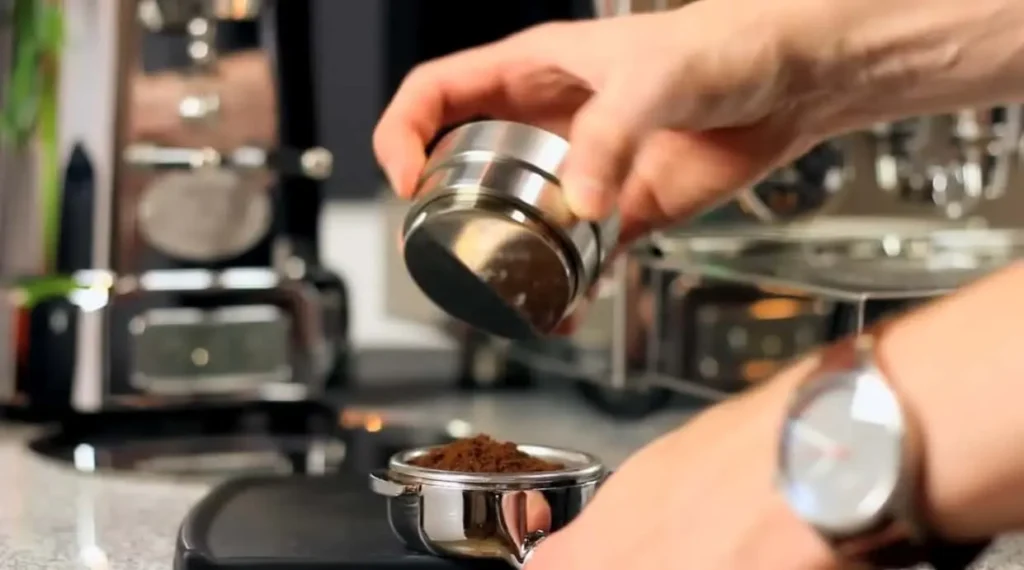
- Promotes an even extraction by preventing any uneven density in the coffee bed. This helps avoid channeling or uneven extraction of flavors.
- Eliminates the need for WDT (Weiss Distribution Technique) or other intricate methods to achieve an even distribution of coffee grounds.
- Speeds up the tamping process, making it more efficient, especially in a busy café environment.
- Reduces the likelihood of introducing variations in pressure while tamping, resulting in more consistent shots.
Visual Cues For Proper Tamping
Visual cues can guide you in ensuring that your tamping technique produces consistent and excellent espresso shots. Here are some visual cues to keep in mind:
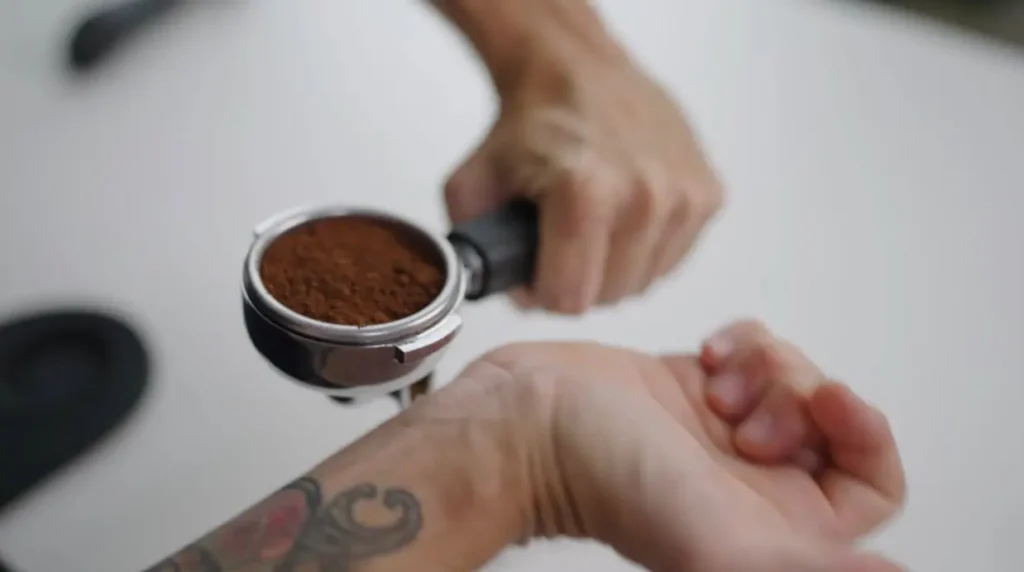
- Look for a smooth and level coffee bed after tamping. If you notice any unevenness or slopes, it may indicate an inconsistent tamp.
- Check for an absence of coffee grounds on the sides or rims of the portafilter. Grounds on the edges can indicate an uneven tamp and may lead to channeling or poor extraction.
- Inspect the espresso puck after the extraction. A well-tamped shot should have a uniform, rounded shape with an indentation from the espresso machine’s shower screen.
With these tips and techniques, you can improve your espresso tamping skills and ensure consistently delicious shots every time. Remember, practice and experimentation are key to mastering this crucial aspect of espresso preparation.
Conclusion
So there you have it – the importance of proper espresso tamping cannot be overstated. It ensures even extraction, enhances the flavors, and ultimately delivers a superior espresso experience. By applying the right pressure, distributing the grounds evenly, and creating a level surface, you can achieve consistent results every time.
So, next time you make espresso, remember to give your tamp the attention it deserves for that perfect, rich cup of coffee. Happy brewing!
A. I. Moon
A.I. Moon, an experienced SEO Pythonista, spends his days coding and developing web applications to help business owners. A passionate coffee enthusiast, he believes that drinking coffee fuels his creativity and productivity. His day isn't complete without the rich aroma and invigorating warmth of a perfectly brewed cup. This love for coffee inspired him to found EspressoRivo, a platform dedicated to sharing his coffee knowledge and fostering a community of passionate aficionados.







I’ve actually tried a lighter tamp with good results! It can be tricky to find the sweet spot, but it definitely helped with bitterness in my shots. Maybe this forbidden technique is just about going against the grain of “tamp harder = better espresso.”